Interpret "National Catalogue of Hazardous Wastes", Regenerate WO3 Waste Denitration Catalyst
- Details
- Category: Tungsten's News
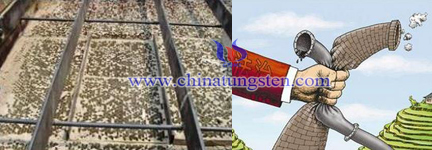 Recently, China has revised and promulgated the "National Catalogue of Hazardous Wastes" (version 2016), and will be taken effect on August 1st, 2016. In this revising, the 49 major categories 400 kinds of hazardous wastes of the 2008 edition of was adjusted to 46 major categories 479 kinds (362 kinds from the original catalogue, and 117 kinds added); wherein the primary organic solvents waste, waste halogenated organic solvents and waste organic solvent are combined into the waste organic solvents and waste solvent-containing, and removed the containing polychlorinated furans waste and containing polychlorinated dioxins, while increased the waste category of waste catalyst at the same time.
Recently, China has revised and promulgated the "National Catalogue of Hazardous Wastes" (version 2016), and will be taken effect on August 1st, 2016. In this revising, the 49 major categories 400 kinds of hazardous wastes of the 2008 edition of was adjusted to 46 major categories 479 kinds (362 kinds from the original catalogue, and 117 kinds added); wherein the primary organic solvents waste, waste halogenated organic solvents and waste organic solvent are combined into the waste organic solvents and waste solvent-containing, and removed the containing polychlorinated furans waste and containing polychlorinated dioxins, while increased the waste category of waste catalyst at the same time.| Tungsten Oxide Supplier: Chinatungsten Online www.tungsten-oxide.com | Tel.: 86 592 5129696; Fax: 86 592 5129797;Email:sales@chinatungsten.com |
| Tungsten News & Prices, 3G Version: http://3g.chinatungsten.com | Molybdenum News & Molybdenum Price: http://news.molybdenum.com.cn |
Illegal Dumping Jailed in Yunnan, WO3 Photocatalyst Degrades Landfill Leachate
- Details
- Category: Tungsten's News
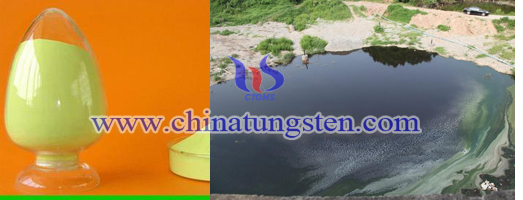
| Tungsten Oxide Supplier: Chinatungsten Online www.tungsten-oxide.com | Tel.: 86 592 5129696; Fax: 86 592 5129797;Email:sales@chinatungsten.com |
| Tungsten News & Prices, 3G Version: http://3g.chinatungsten.com | Molybdenum News & Molybdenum Price: http://news.molybdenum.com.cn |
First "Botanical Garden" Sewage Treatment Plant Settled Shanghai, WO3 Photocatalyst Treats Industrial Waste Water
- Details
- Category: Tungsten's News

| Tungsten Oxide Supplier: Chinatungsten Online www.tungsten-oxide.com | Tel.: 86 592 5129696; Fax: 86 592 5129797;Email:sales@chinatungsten.com |
| Tungsten News & Prices, 3G Version: http://3g.chinatungsten.com | Molybdenum News & Molybdenum Price: http://news.molybdenum.com.cn |
6.5 Million Die for Air Pollution Yearly, Tungsten Trioxide Desulfurization Catalyst Experts on Haze Governance
- Details
- Category: Tungsten's News
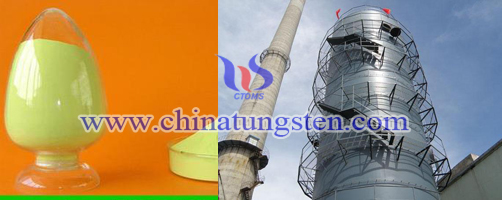
| Tungsten Oxide Supplier: Chinatungsten Online www.tungsten-oxide.com | Tel.: 86 592 5129696; Fax: 86 592 5129797;Email:sales@chinatungsten.com |
| Tungsten News & Prices, 3G Version: http://3g.chinatungsten.com | Molybdenum News & Molybdenum Price: http://news.molybdenum.com.cn |
Price Trend of Tungsten in July, 2016
- Details
- Category: Tungsten's News
According to the analysis of tungsten market these months, the price of tungsten is going up and down, and it is expected that the trend in July is also in low level.
The world economy is under a downturn circumstance, demand of tungsten is going through the same situation. This year, its price has hit the bottom line as tungsten concentrate to be 57,000RMB/TON. After several government’s stimulus activities, such as State Reserve Purchasing and Storage Tungsten Plan, Main Tungsten Companies’ Meetings, the price has been going up until end May. Even the third Meeting of China Tungsten Industry Association and main suppliers had also held a meeting in Jun, but there seems no increasing after this meeting. As the opposite side, the price is going down and down, and the trend will continue in July.
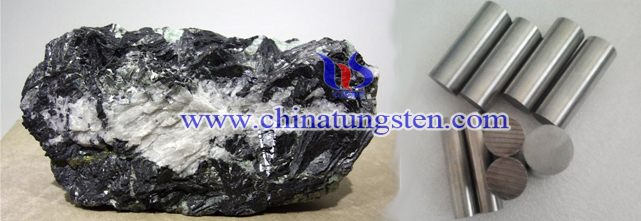
Actually, the price of 57,000RMB/TON for the tungsten concentrate has beyond the manufacturers’ cost, and that is why most of the manufacturers are only opening for a basic salary support and equipments operations, but do not eager to larger the production volume. Even at such opening status, the stock size is still in thousand tons. A Jiangxi Company shows its stock as 400tons concentrate. In order to keep the price level in 75,000RMB/TON, the eight Largest Tungsten Suppliers has limited its production volume, with a hope that the market will be brighter.
As consumption productions, in fact, tungsten has also got a seasonal time, which is July and August. Europe and America have been two large tungsten users, most of factories are tend to being vacation to escape from such hot whether and high temperature. As a result, the purchasing in these two months will be obviously decreasing.
Less purchasing, but larger stock, tungsten price is expected to stay in a low level. Conversely, when the price decreases to a bottom level, stays and go up rapidly as a trend. Tungsten is a mysterious but significant material. No matter the price is, its strategic position is never changed. Down trend of raw material will lead to a finished products price declining, including tungsten bar, tungsten electrode, ect. Therefore, the price of tungsten finished products in July is still not so positive.
| Tungsten Metals Supplier: Chinatungsten Online www.tungsten.com.cn | Tel.: 86 592 5129696; Fax: 86 592 5129797;Email:sales@chinatungsten.com |
| Tungsten News & Prices, 3G Version: http://3g.chinatungsten.com | Molybdenum News & Molybdenum Price: http://news.molybdenum.com.cn |
Tungsten Oxide Industry Analysis and Outlook 2016-2023
- Details
- Category: Tungsten's News
Tungsten Oxide Market: Emerging Applications and Drivers
Tungsten oxide has several everyday uses. It is used in the manufacture of tungstates for fireproofing fabrics, for x-ray screen phosphors, and in gas sensors. Tungsten trioxide is also used as a pigment in coatings, paints, and ceramics due to its rich yellow color. In addition, tungsten trioxide has also proven useful in the production of smart windows or electro chromic windows. Smart windows are essentially electrically switchable glass that can alter its light transmission properties when a certain voltage is applied. This allows the user to obtain the desired level of tint on their windows by deciding how much light they want passing through.
The growth in end user industries is expected to increase consumption of tungsten oxide. The growth in medical and firefighting industry is set to drive the tungsten oxide market. In addition, rising consumption of semi-conducting compounds in emerging economies of Asia Pacific and Latin America is expected to boost demand for tungsten oxide. However, availability of substitutes and fluctuating raw material prices could hamper the growth of the market.
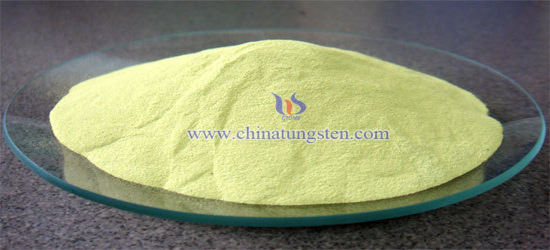
Tungsten Oxide Market: Regional Dynamics
Growth in tungsten oxide demand is expected to be led by the Asia Pacific market, particularly China which accounted for majority of consumption in 2013. Major manufacturers of tungsten compounds are relocating their production facilities to China due to availability of cheap labor, infrastructure and attractive government policies. Republic of Korea, India, Vietnam, Malaysia, Cambodia, Australia, New Zealand and Sri Lanka are other major consumers of tungsten oxide in Asia Pacific. North America and Europe are mature markets and expected to experience moderate growth.
| Tungsten Oxide Supplier: Chinatungsten Online www.tungsten-oxide.com | Tel.: 86 592 5129696; Fax: 86 592 5129797;Email:sales@chinatungsten.com |
| Tungsten News & Prices, 3G Version: http://3g.chinatungsten.com | Molybdenum News & Molybdenum Price: http://news.molybdenum.com.cn |
Tungsten Carbide High Head Cutter Pump
- Details
- Category: Tungsten's News
New CR series 3” and 4” tungsten carbide high head cutter pump produce heads of up to 70 metres. Designed for cutting fibrous material in industrial or effluent/sewage applications, the new series was developed for applications where pump out either over longer distances or higher elevations is required.
“The new tungsten carbide high head cutter pump range is expected to be of real interest in sewage, effluent and industrial waste applications where more head is required than conventional equipment”, said Australian Pump Industries’ manager, Neil Bennett. “The combination of the ability to chop material and pump to a high head is a new development,” he said.
The new three-phase CR series start from 2.2kW units that offer flows of up to 600 litres per minute with heads to 20 metres. At the other end of the scale, the big 22kW 4” version delivers maximum flow of 1700 litres per minute with a head of 70 metres.
All submersible pumps are backed with a 3 year warranty. This is possible because they incorporate features that make them extremely robust and they are designed for an extended working life in severe conditions.
CR series incorporate a cutter mechanism that consists of a Tungsten carbide tip channel impeller and a saw-tooth suction cover hardened surface. The cutter mechanism cuts fibrous material into small pieces permitting clog free pumping.
Like all sewage and wastewater pumps, the new CR series come with a unique anti-wicking cable entry. This mechanism protects the motor by sealing the stripped back cable conductors with a moulded rubber or epoxy “potting” which has been loaded between each strand of the conductor. This unique feature prevents wicking along the strands of the conductor itself and protects the motor.
The motors are dry type squirrel-cage induction design, housed in a water-tight casing. They conform to insulation classes E or F. In each of these insulation classes all standard pumps can be used in ambient temperatures of up to 40 degrees Celsius.
The CR series mechanical seal is a double silicone carbon style located inside an oil chamber. The oil chamber, located beneath the pump chamber and the motor, prevents the ingress of water to the motor. Tsurumi’s fully oil immersed mechanical seals eliminate spring failure caused by corrosion, abrasion or fouling.
The seal chamber is also fitted with a patented “oil lifter”. This is a lubricating device for the mechanical seal. It utilises the centrifugal force if the shaft seal by forcibly supplying lubricating oil to the mechanical seals. This simple device protects both seals, lubricating and cooling but retaining stable shaft seal effect to extend life.
Pumps up to 7.5Kw have an auto cut out resetting CTP (Circle Thermal Protector). This is integrated into the motor housing. The CTP directly cuts the motor circuit if excessive heat builds up or an overcurrent caused by electrical or mechanical failure occurs.
Sliding discharge connectors are also available for the cutter pump range and are popular for permanent installations. Pumps can be easily removed for maintenance without the need to drain the wastewater pond. The C series are available in a wide range of options from 50 through to 100mm discharge bores and with power ratings of between 0.75Kw to 15Kw.
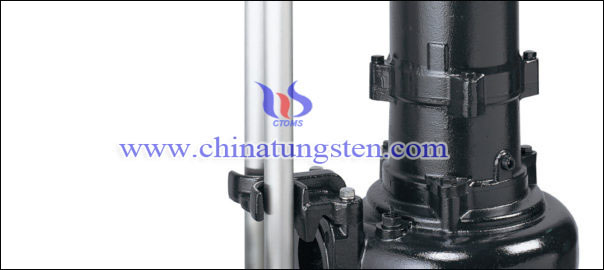
| Tungsten Carbide Supplier: Chinatungsten Online tungsten-carbide.com.cn | Tel.: 86 592 5129696; Fax: 86 592 5129797;Email:sales@chinatungsten.com |
| Tungsten News&Tungsten Prices, 3G Version: http://3g.chinatungsten.com | Molybdenum News & Molybdenum Price: http://news.molybdenum.com.cn |
Illegal Sewage Discharging Fined 500,000 RMB, Wo3 Photocatalyst Degrades Papermaking Wastewater
- Details
- Category: Tungsten's News
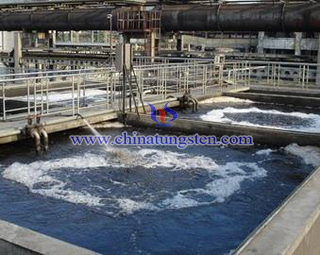 Recently, a paper company in Tianjin due to illegal discharge of industrial waste water, and cause serious pollution to the surrounding environment, was fined of 500,000 RMB. It is reported that this paper-making company is mainly engaged in papermaking from waste paper, and has been handled the environmental protection acceptance procedures; according to the requirements, its generated wastewater should be recycled after treated with the treatment facility, but can not efflux. However, the data on-site inspection showed that the total suspended solids discharge ports exceeded by 18 times, chemical oxygen demand COD exceeded by 24.5 times; the suspended solids of sewage pit outside the plant exceeded by 163 times, chemical oxygen demand exceeded by 123 times, now you can see how serious the pollution is.
Recently, a paper company in Tianjin due to illegal discharge of industrial waste water, and cause serious pollution to the surrounding environment, was fined of 500,000 RMB. It is reported that this paper-making company is mainly engaged in papermaking from waste paper, and has been handled the environmental protection acceptance procedures; according to the requirements, its generated wastewater should be recycled after treated with the treatment facility, but can not efflux. However, the data on-site inspection showed that the total suspended solids discharge ports exceeded by 18 times, chemical oxygen demand COD exceeded by 24.5 times; the suspended solids of sewage pit outside the plant exceeded by 163 times, chemical oxygen demand exceeded by 123 times, now you can see how serious the pollution is.| Tungsten Oxide Supplier: Chinatungsten Online www.tungsten-oxide.com | Tel.: 86 592 5129696; Fax: 86 592 5129797;Email:sales@chinatungsten.com |
| Tungsten News & Prices, 3G Version: http://3g.chinatungsten.com | Molybdenum News & Molybdenum Price: http://news.molybdenum.com.cn |
Netherlands Haze Purification Tower to China, WO3 Denitration Catalyst Boosts Air Purification
- Details
- Category: Tungsten's News
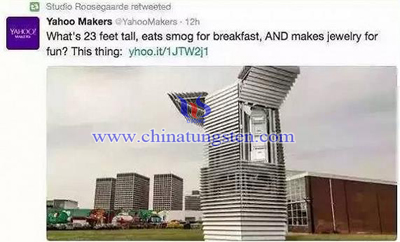
| Tungsten Oxide Supplier: Chinatungsten Online www.tungsten-oxide.com | Tel.: 86 592 5129696; Fax: 86 592 5129797;Email:sales@chinatungsten.com |
| Tungsten News & Prices, 3G Version: http://3g.chinatungsten.com | Molybdenum News & Molybdenum Price: http://news.molybdenum.com.cn |
Cities Introduce Policies to Reduce Logistics Costs, Accelerating Transactions of Tungsten Products (Tungsten Heater)
- Details
- Category: Tungsten's News
Recently, according to the data released by National Development and Reform Commission, it is said that logistics costs was 10.8 trillion RMB in last year, accounting for 16.0% of GDP. Therefore, many cities have been introduced many policies for enterprises to reduce logistics costs, it is possible to significantly reduce the passage money of highway.
"2015 National Logistics Operational Aspect Briefing" shows that the total cost of social logistics is 10.8 trillion RMB in last year, an increase of 2.8% over the previous year, accounting for 16.0% of GDP. Vice Director of China Federation of Logistics and Purchasing Zhouzhi said that the current charge of highway accounts for 30% -40% of the main transport business costs. The member of the National Committee of CPPCC and the vice-chairman of All-China Federation of Industry and Commerce Xu Guanju said that if the logistics cost increases, it will become a stumbling block to the development of domestic manufacturing enterprises.
By reducing the passage money of highway would further reduce logistics costs, which will directly affect the development of tungsten enterprises. Tungsten heater is one of the main tungsten products, and highway transport is the most important way to transport goods. This year China's provinces began to reduce logistics costs and make the appropriate measures. Hubei province has been reduced the province's highway charge about 10% from June 1 this year, and Shanxi province introduced preferential policies by a wide margin for the trucks of highway from May 20.
These policies not only help reduce product transportation costs, but also allow truck drivers benefit from it. Many truck drivers said that reducing the passage cost of highway, they are able to save some of that money. While reducing the cost is conducive to the development of manufacturing enterprises, but the requirement of repair and maintenance to the highway would be stricter, and the increased of vehicular traffic is bound to increase the burden on the road.

| Tungsten Metals Supplier: Chinatungsten Online www.tungsten.com.cn | Tel.: 86 592 5129696; Fax: 86 592 5129797;Email:sales@chinatungsten.com |
| Tungsten News & Prices, 3G Version: http://3g.chinatungsten.com | Molybdenum News & Molybdenum Price: http://news.molybdenum.com.cn |




 sales@chinatungsten.com
sales@chinatungsten.com